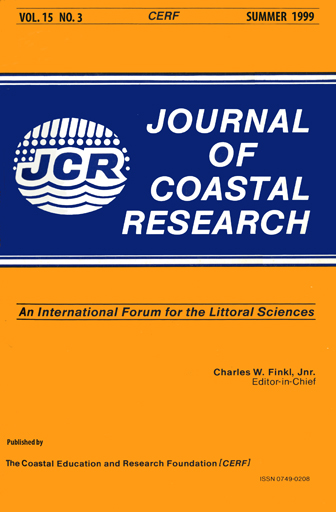Bedforms in a Laboratory Wave Flume: An Evaluation of Predictive Models for Bedform Wavelengths
Keywords:
Ripple wavelength, spectral waves, monochromatic waves.Abstract
Recent bedform dimensions measured in shallow waters in the nearshore zone (VINCENT and OSBORNE, 1993; OSBORNE and VINCENT, 1993; MARSH, 1996) compare poorly with published predictive models for bedform dimensions. A series of experiments were conducted in a large flume with a computer-controlled wave generator and a sand bed, using waves of various amplitudes and characteristics including waves from a field site and monochromatic waves. The ripple wavelengths were then compared to the wavelengths predicted by the models of NIELSEN (1981), GRANT and MADSEN (1982), MOGRIDGE et al. (1994) and WIBERG and HARRIS (1994), and to the semi-quantitative model of CLIFTON (1976). Under spectral waves from the field site the mean ripple wavelengths are anorbital remaining constant (within the scatter of the measurements) and showing none of the trends predicted by the models but falling between the dimensions predicted by NIELSEN (1981) for 'laboratory' and 'field' waves. Under monochromatic waves the ripples scaled with the wave orbital amplitude (λ= 0.4A0) and were much closer to the model predictions.
It is suggested that it is rather difficult to change the wavelength of ripples once they have formed. Field waves generally have a broad spectrum of frequencies (and hence of orbital excursions) so there is no length scale of sufficient dominance to force the bed to reform. With regular waves every orbital excursion is the same and the bed rapidly scales to this length. Our data suggest that bed form dimensions in an event may therefore be determined by the first waves capable of imposing their length scale on the bed, or by bed forms from an earlier event.


